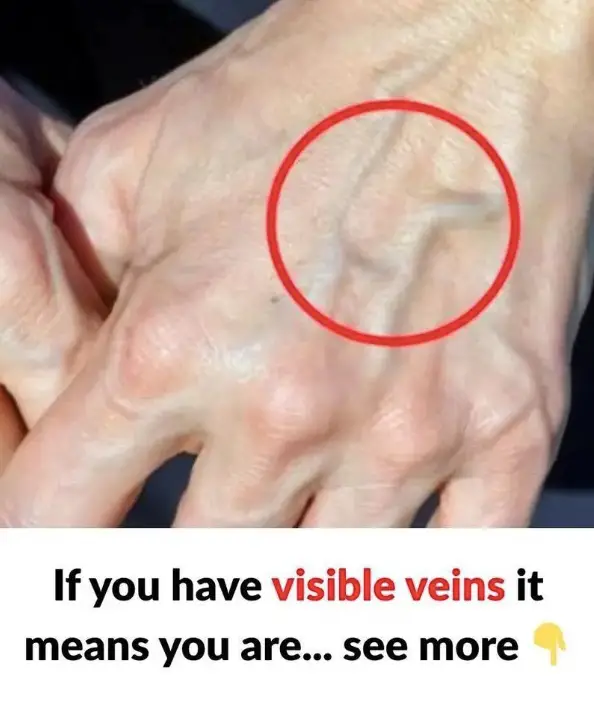
Have you ever glanced at your arms, legs, or hands and noticed veins that seem more visible than usual? It can be surprising, especially if you’ve never paid much attention to them before. For many people, this sudden prominence of veins is a normal physical change, often tied to factors like aging, changes in body composition, or environmental conditions.
However, there are instances where visible veins may signal something more serious—such as vascular issues, hormonal imbalances, or circulatory concerns. Understanding the difference between what’s typical and what might need medical attention is key to staying informed and healthy.
In this guide, we’ll break down the common (and uncommon) causes of visible veins, how to assess whether what you’re seeing is normal, and when you should talk to a doctor.
Let’s start with one of the most common—and generally harmless—causes of suddenly visible veins:
1. Low Body Fat: A Common and Harmless Cause of Visible Veins
Visible veins are often associated with low levels of body fat. This is especially true for individuals who are physically active, on a weight loss journey, or engaging in strength training or endurance sports. As your body fat percentage drops, so does the amount of subcutaneous fat—this is the layer of fat just beneath your skin that usually conceals your veins.
When this fat layer becomes thinner, your veins become more apparent, particularly in areas like:
Arms and forearms
Hands and wrists
Abdomen
Legs and calves
Why Does Low Body Fat Make Veins More Visible?
There are several physiological reasons behind this change:
Reduced Fat Padding: Fat acts as a natural barrier that hides underlying structures. With less fat, veins are no longer obscured and become more prominent beneath the skin.
Increased Muscle Definition: Strength training or any form of resistance exercise can increase muscle size. As muscles grow, they push veins closer to the skin’s surface, especially when body fat is low.
Improved Circulation During Exercise: During workouts, your veins dilate (a process called vasodilation) to accommodate increased blood flow. This is why veins may appear larger temporarily right after exercise.
Hydration and Carb Intake: Low carbohydrate intake and dehydration can also make veins look more prominent because of decreased water retention, which further reduces the “puffiness” that might otherwise conceal them.
Who Typically Experiences This?
Athletes and Bodybuilders: Those aiming for lean physiques often intentionally lower their body fat to improve muscle visibility, which includes vascularity.
People on Calorie-Restricted Diets: A sudden drop in weight or body fat can make veins more noticeable even in non-athletes.
Aging Adults: As we age, skin becomes thinner and less elastic, and body fat naturally redistributes or diminishes, making veins more visible even without major lifestyle changes.
When It’s Not a Cause for Concern
Visible veins due to low body fat are generally harmless. If you are healthy, active, and not experiencing any pain, swelling, or skin discoloration, there’s usually no reason for concern.
However, if visible veins are accompanied by other symptoms like fatigue, unexplained weight loss, or swelling in the limbs, it’s worth speaking to a healthcare provider.




